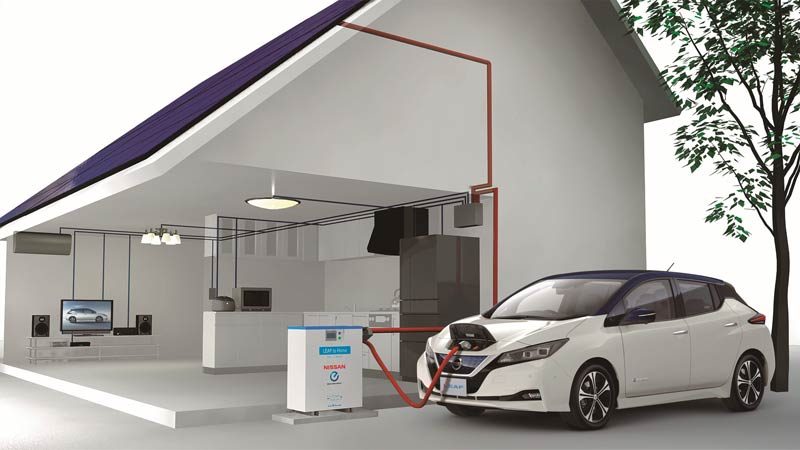We are encouraging questions from readers about electric vehicles, and charging, and whatever else you want to learn. So please send them through and we will get our experts to respond, and invite other people to contribute through the comments section.
Our latest question comes from Andy, who asks:
One topic that I haven’t seen you cover is V2G and V2H technology – what the current state of play is, what are the issues, which models support bidirectional charging etc etc.
Given the projected pricing of some of the about-to-arrive Korean models with 400km range is about $1K/kWh, it’s competitive with per kWh pricing for domestic batteries. Buy a big battery and get a car thrown in.
Keep up the great work,
Andy
Hi Andy – you ask a good question – which is also hard to answer!
V2G (vehicle to grid) and V2H (vehicle to home) are potentially game changing technologies that are still in the very early stages of development. So the initial answer for those who know a bit about them, and are wanting to implement them now, is ‘not there yet – and except for limited V2H roll-outs, may never happen’.
The longer answer for those wondering what they are, and why they could be game changing technologies, is given below, starting with Vehicle to Grid.
V2G:
In its simplest form, V2G is a system where the power grid communicates with a plug-in electric vehicle to feed electricity back to the grid at peak and/or emergency times. (Note that some more recent definitions of V2G also include throttling back the Electric Vehicle (EV) charging rate at peak demand times. However this is probably better referred to separately as ‘demand management’).
Given the potential large-scale roll-out of batteries in EVs, coupled with the success of grid scale battery storage systems like the Tesla system in South Australia, it is no wonder that many people view V2G systems as a game changer for answering questions around reliability of supply for renewable energy-based grids.
In fact, V2G systems are being experimented with by many supply authorities around the world – but none yet have been rolled out in any form beyond small-scale trials. And there are many reasons for this hold-up; V2G is neither as simple, nor as economic, as it first appears.
The first issue with V2G technology is the communications systems to control such back and forth energy supply are complicated, and yet to be agreed.
A further complication to talking to the EV battery for V2G purposes is that the two main DC EV charging systems (CHAdeMO and the Combined Charging System, or CCS) communicate with the vehicle in totally different ways.
CHAdeMO uses CAN (Controller Area Network – the ‘standard’ in-vehicle communication protocol) and CCS uses Power Line Communication (PLC) – which is the standard grid communication system.
Until DC charging systems settle on one communications system (or, for that matter, a standard plug type!) – V2G will be hard to implement for all EVs on the road.
A second issue with V2G technology is that EV batteries and home storage batteries are currently very different beasts.
EV batteries are optimised for fast charge/discharge plus light weight and small size, and home systems for gentle charge/discharge with weight/size effectively being non-considerations.
EV batteries in particular have a limited number of charge/discharge cycles before they start to decline in their capacity to deliver the fast discharge needed for good acceleration.
For normal driving use: this equates to around 8 – 10 years. Adding many light charge/discharge cycles via V2G use could considerably shorten the life of an EV battery!
A third consideration is that EV batteries have a very good potential second-life as home storage batteries after they finish their life in an EV.
As older EV batteries become more plentiful, this could drastically reduce the cost of home storage systems that can be built with back/forth charging capacity to/from the grid.
The question then becomes: “why would you want to use the more expensive new batteries in your EV (and replace them more often) as compared to installing a cheaper, purpose-built, home V2G/V2H storage battery system??”
A fourth consideration is there will need to be some form of electronic control of the V2G system. This will need to be contained within a box in the home, built into the vehicle, or both. Either way – this is an additional cost on top of the ‘$40K, 40kWh battery with car thrown in’ scenario.
And to add yet another complication/limitation: plug-in hybrids (PHEVs) often have quite small batteries – so PHEVs would have little to nothing to offer V2G systems.
The other part of your question related to Vehicle to Home (V2H) systems.
V2H:
This is where the EV battery works as a residential battery storage system and/or as a backup power-supply during short-term grid outages.
Again – as for V2G above, if the battery is regularly discharged/recharged more often than for driving alone – the EV battery life will be shortened.
Another consideration on top of the issues relating to V2G is the EV may not even be home and plugged in when it is needed for home use, or for providing the emergency supply!
On the other hand, for emergency response situations V2H systems can be invaluable.
Nissan in Japan offer just such a system. Their system controls the vehicle charging to low demand times (demand management) plus will take over feeding power to the home in the event of a grid failure.
As the battery will only be used for emergencies, the issue of too many additional charge/discharge cycles is also avoided.
However the house switchboard will need to be reconfigured and an extra control system installed within it, plus the cost of the Nissan Power Control System box itself.
In summary – V2G and possibly V2H systems may never become a ‘thing’ because:
- They age EV batteries faster;
- EV battery management systems are not optimised to grid charge/discharge needs;
- They will be an expensive solution compared to the coming wave of second-life home battery V2H (and possibly V2G) systems using retired EV batteries;
- The cost of V2G control systems (potentially significantly increasing the cost of a car-charging installation) may not be much less than a dedicated home battery system with the control system built-in.
- PHEVs offer little to no capacity for use with for V2G and V2H systems;
- And lastly, in reference to V2H systems: the EV may not actually be home to provide V2H services when they are needed.
On the other hand, V2H systems that only supply power to the home in the event of a power failure are actively supported in Japan and would be an invaluable safety support system in any area prone to natural disasters or occasional grid drop-outs.

Bryce Gaton is an expert on electric vehicles and contributor for The Driven and Renew Economy. He has been working in the EV sector since 2008 and is currently working as EV electrical safety trainer/supervisor for the University of Melbourne. He also provides support for the EV Transition to business, government and the public through his EV Transition consultancy EVchoice.

